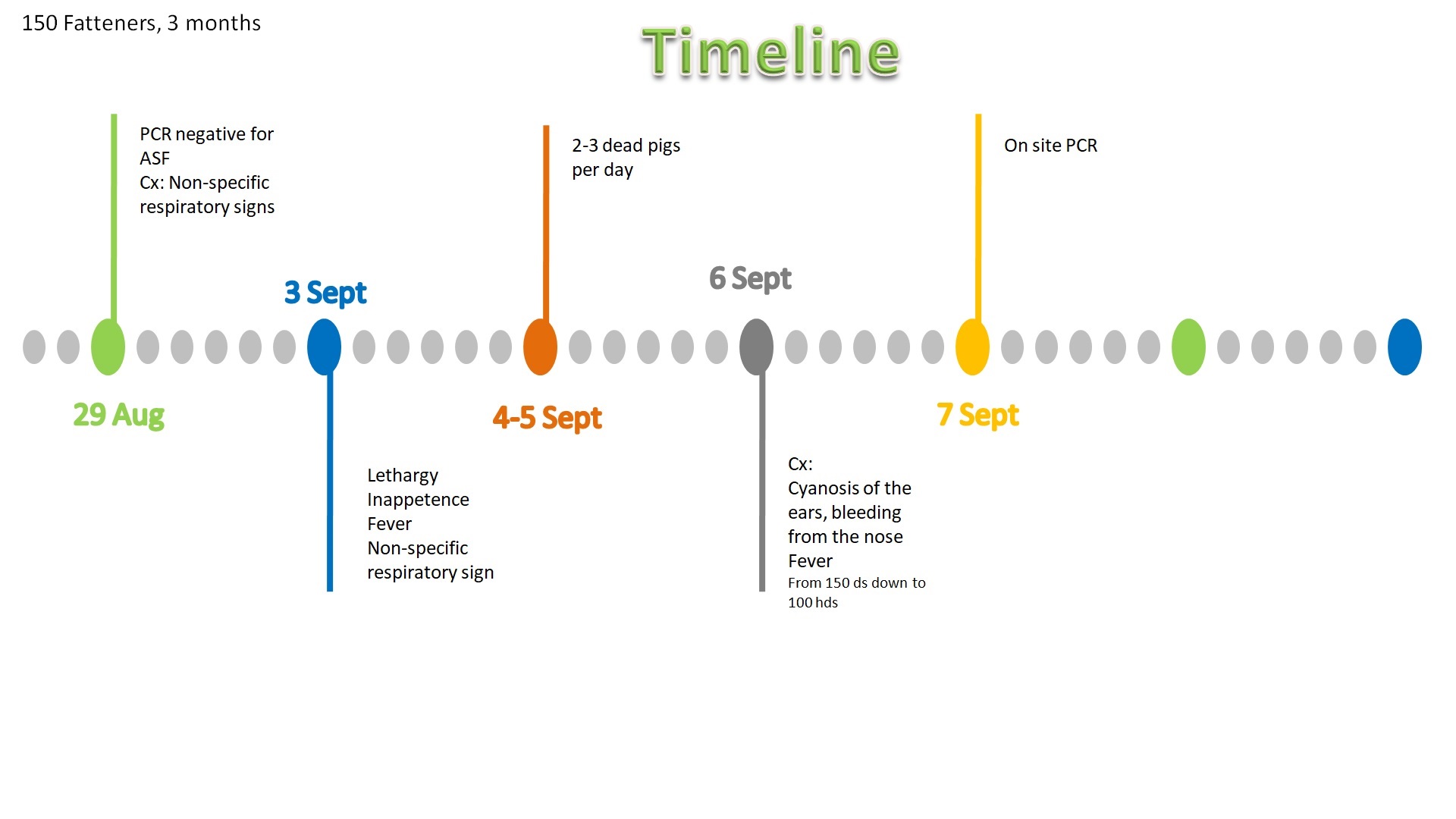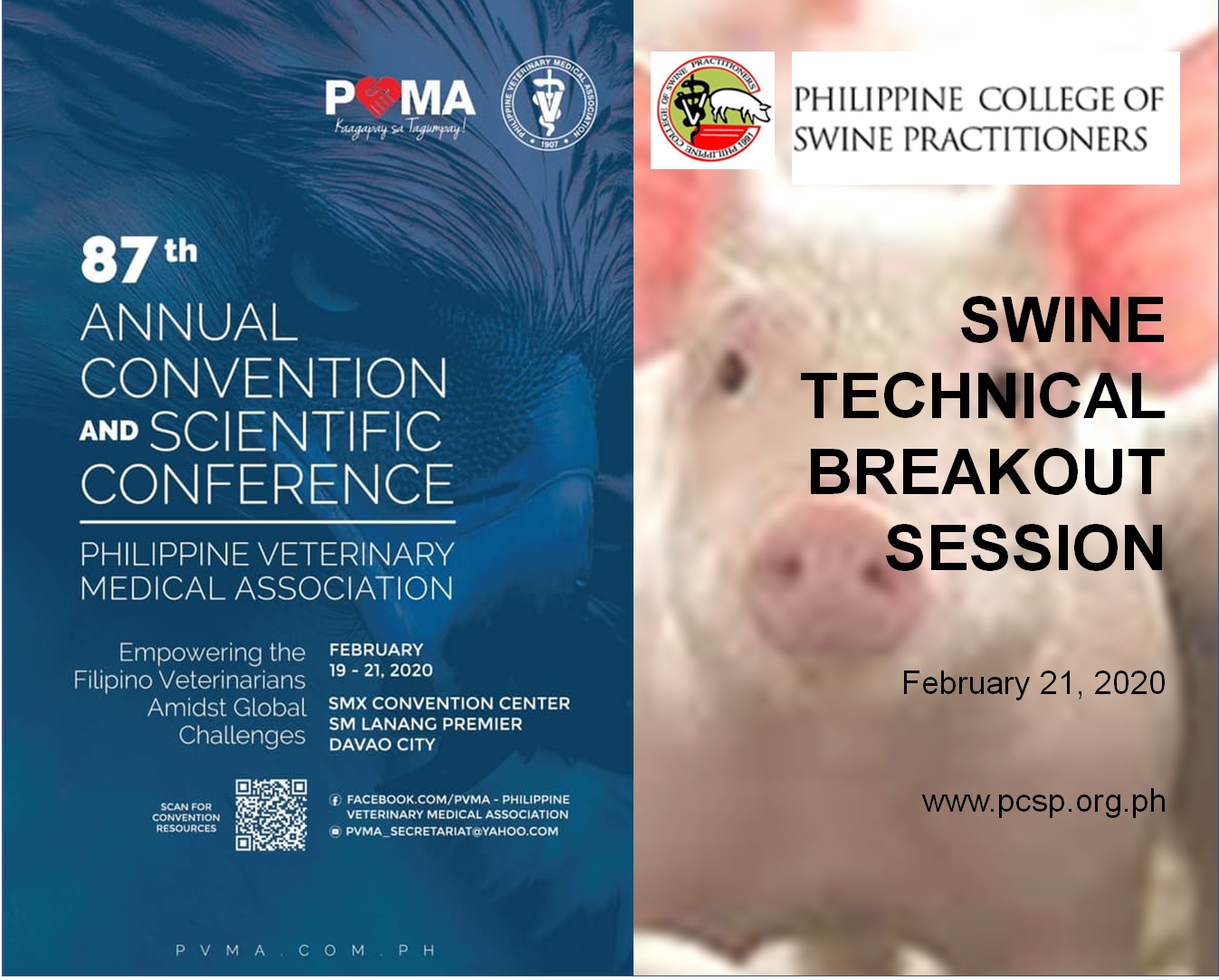One year hence: Where did the Philippines’ ASF infection come from?
PCSP/ August 6, 2020
The Philippines is already one year into battling ASF, with its spread still unchecked and affecting countless farms and livelihood. The question remains: how did we get it? In almost all cases (and even in other countries), there is lack of concrete evidence and only causal inference as to the source of infection – here in the Philippines, swill feeding as the entry point and trucks for the fast spread is implicated. The link may be derived from the study of genomics. But there is a lack of studies on genomic sequencing made public – though we were informed in September 2019 that the index case of the Philippines in Rizal was indeed ASF and the same strain that infected Asian countries. https://www.pna.gov.ph/articles/1079919
A case report
The PCSP is featuring a case report of an ASF outbreak (pdf file) that was investigated by poultry veterinarians, but who readily helped and dutifully reported the data to the Bureau of Animal Industry. The BAI in turn allowed the PCSP to invite the researchers to present the data in the PVMA’s Swine Technical Breakout Session.

The case report also detailed the sample types that enabled the early detection of the disease– pooled tissue samples from a dead pig and two sick pigs, and blood samples from four apparently healthy pigs. This yielded six positive results out of seven samples tested, with the sample from an apparently healthy pig being the lone negative sample. A timeline of the disease investigation is also detailed in the image. The early detection of ASF cases is advocated by the PCSP, hoping that with the timely collection of the correct samples and corresponding tests for ASF, it will help the industry make guided decisions as detailed in the PCSP Technical Advisory No. 4.
They also did further tests by p72 gene sequencing. The positive samples were 97-100% closely related to the genotype II causing the infections in Europe and in Asia, notably the nearest was China ASFV (2018). This paper established that the ASF genotype II is the highly virulent and predominant strain responsible for this case in Bulacan. This correlates with the study to align of all publicly available eastern European whole-genome sequences, as well as ASFV-China, showing that all these genomes are nearly identical with identities of more than 99.9%.
Although the paper did not identify where the strain came from, there are possible entry points. While the Philippines has a meat trade with countries in Europe, it has effectively banned imports from those with the slightest link to ASF. So, it can be inferred that the source is one where there is an existing albeit unchecked trade.
Illegal pork trade and swill feeding
The illegal trade with China, with connivance from some Philippine traders, is the biggest headache of the agriculture sector generally, and specifically for protein meat producers. There are numerous reports of smuggled poultry/pork meat and meat products in the local food industry. The government’s quarantine officers made several campaigns and were able to catch many well-meaning travelers carrying canned and other meat products in their luggage. Local government veterinarians mobilized to help their provinces protect their swine industry stakeholders. However, whether these efforts effectively curbed the entry of illegal pork and pork products is unknown.
The real problem is that these products are used in hotels, restaurants, and households, where the food waste could go to small-scale farmers that use them as swill feed- often identified as the culprit of new outbreaks. Swill feeding is the entry point in most cases. Some examples include: the index case in Rizal and the subsequent cases in Quezon City – hotel and airline food wastes fed uncooked to pigs; the case in Cavite – restaurant food waste; the first case in Davao Occidental where a cargo ship’s food waste and imported meat made into sausage were sold in the area; and the new outbreaks in South Cotabato that have been attributed to online selling of chorizo (pork sausage). The PCSP has issued its Technical Advisory No. 5 on Swill Feeding to hopefully help the swine industry by addressing this issue.
Tracking the spread of ASFV in the Philippines
After the entry of ASF, we consequently saw its steady spread. Further genomic sequencing of our ASF cases especially at different areas and time points might allow identification of genetic markers that could aid high-resolution molecular epidemiology and help in our fight against ASF. This means we are aware if other ASFv genotypes have entered and will be essential in our future vaccine choices. This highlights the essential function of disease diagnostics.
Regardless of possible entry points, ASF has arrived in the country and is being spread further. The need to track the ASF virus by further molecular methods is important, but not an urgent concern in light of the fact that while farms and laboratories are still trying to catch up with the needed tests for movement certifications.




Leave A Comment